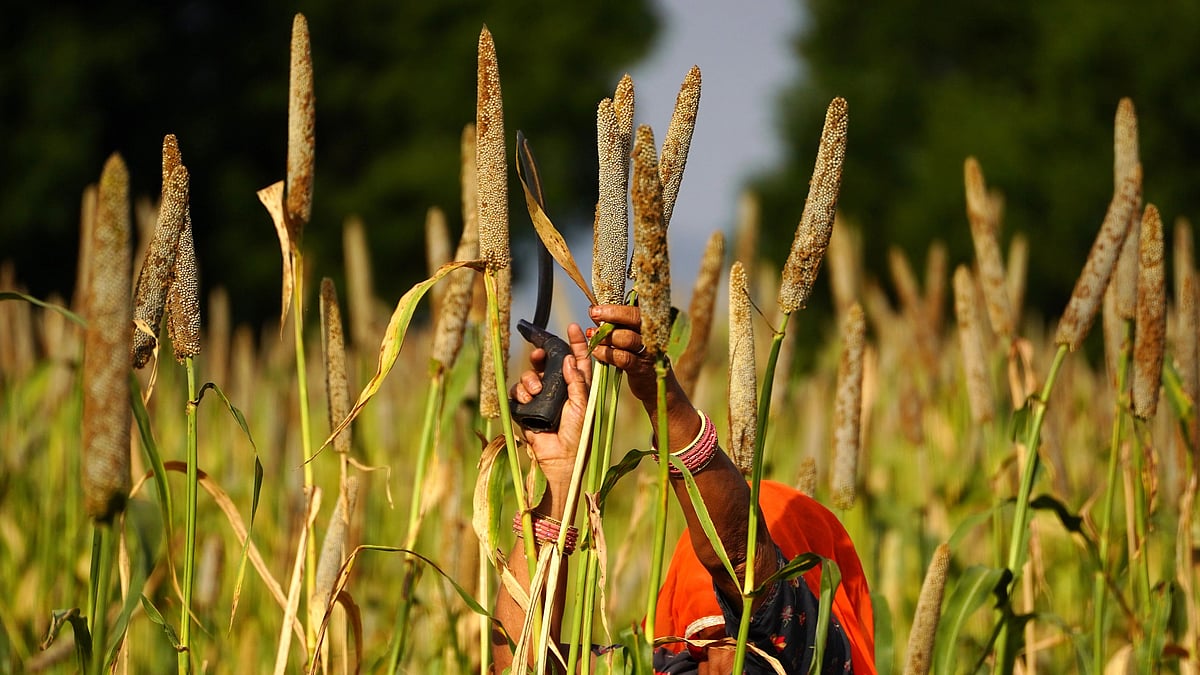Environment
Urgent need to adapt pearl millet farming to changing climate, say researchers
Pearl millet farming zones must evolve to combat climate change and to better support this crucial crop that sustains dryland communities, says a study.

Even as changing climate conditions are threatening pearl millet (bajra) production, a team of researchers has suggested a re-evaluation of how and where the millet is grown in India.
Pearl millet is an essential cornerstone of India's food security and finds itself at a critical juncture.
Amidst shifting weather patterns and evolving agricultural priorities, the new study urges a timely revision of the classification criteria governing pearl millet cultivation zones, originally established back in 1979.
Currently, India's zones are based on rainfall and soil type: A1 for arid regions in Rajasthan, A for semi-arid regions in North and Central India, and B for semi-arid regions with heavy soils in South India.
Researchers from International Crops Research Institute for the Semi-Arid Tropics (ICRISAT) and the Indian Council of Agricultural Research - All India Coordinated Research Project on Pearl Millet (ICAR-AICRP) proposed re-evaluating the A zone, considering evolving climate conditions.
Published: undefined
Researchers from International Crops Research Institute for the Semi-Arid Tropics (ICRISAT) and the Indian Council of Agricultural Research - All India Coordinated Research Project on Pearl Millet (ICAR-AICRP) proposed re-evaluating the A zone, considering evolving climate conditions.
According to Dr Jacqueline Hughes, Director General of ICRISAT, with climate change now a permanent reality, it is imperative to recalibrate the approach towards understanding and nurturing this vital crop for dryland communities.
"This new classification system aims to optimise pearl millet production, to effectively assist policymakers, researchers, and farmers make better evidence-based decisions," Dr Hughes said, in a statement.
The study, featured in a special issue of the Agronomy Journal, used digital technology and crop models to re-evaluate the zones, creating a "digital twin" of the pearl millet system.
This digital twin helps design crops and strategies tailored to the current and future climate conditions of each region.
Published: undefined
"The proposed new zones take into account the complexity of the system in response to changing climate conditions. While the existing zoning for the A1 and B zones is generally still applicable, the suggestion is to modify the A zone,” said Dr Vincent Garin, Post-Doctoral Fellow at ICRISAT.
"The existing A zone can be broken down into three distinct subzones: G, AE1, and AE2, covering the states in North and Central India. The G zone encompasses Gujarat, AE1 covers east Rajasthan and Haryana, and AE2 covers Uttar Pradesh," he added.
The new zoning framework identifies 'AE1' as the core of India's pearl millet production, where favourable climate and soil conditions, along with improved pearl millet varieties, have led to significant yield increases.
'AE2' shows promising yield progress and better farming practices, offering potential for export-oriented gains. The G zone is experiencing more rainfall due to climate changes, which may lead farmers to shift towards cash crops and limit pearl millet cultivation to the summer season.
Published: undefined
Millets are seen as a dietary staple across India.
The country aims to make itself a “global hub” of millets, and even the United Nations has declared 2023 the International Year of Millets.
A recent survey conducted by the Development Intelligence Unit (DIU), a collaboration between Transform Rural India and Sambodhi Research and Communications, showed that millet consumption is more predominant in rural India (77 per cent of women, 71 per cent of men) than urban (15 per cent).
Neeraja Kudrimoti, Associate Director, Transform Rural India (TRI) said millets "wasn’t a fad and was in the mainstream all this while" and to bring it to the fore, we need a deeper penetration. She suggested millet friendly policies for both production and consumption and its inclusion to the government’s public distribution system (PDS), mid-day meals in school and Integrated Child Development Services (ICDS) programmes.
Published: undefined
Follow us on: Facebook, Twitter, Google News, Instagram
Join our official telegram channel (@nationalherald) and stay updated with the latest headlines
Published: undefined